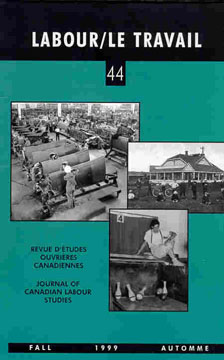Abstract
In the wake of President Roosevelt's New Deal for labour in the US, the International Woodworkers of America (IWA) experienced tremendous growth in Oregon and Washington. Fearing the arrival of the IWA in BC, the provincial government enacted the Industrial Conciliation and Arbitration (ICA) Act as a means to stanch the growth of militant industrial unionism. It was at the company town of Blubber Bay, BC, that the ICA Act was tested for the first time as capital, labour, and the state struggled over the pith and substance of the new legislation. Drawing on the insights of critical legal theorists and neo-institutionalists, this article examines the multiple ways in which the state, law, and legal process shaped both the formation of the IWA and the nature of class struggle itself. In particular, it illustrates how the expansion of formal collective bargaining, as well as the age-old legal remedies available at common and criminal law, worked together to set limits and erect boundaries on collective working-class action and, in the end, forge a "responsible union."
Résumé
A la suite du novel accord sur la main-d'oeuvre signé par le président Roosevelt des États-Unis, le syndicat International Woodworkers of America (IWA) a connu une croissance incroyable en Oregon et dans l'état de Washington. Craignant l'arrivée du syndicat IWA en Colombie-Britannique, le gouvernement provincial a adopté la Loi sur la reconciliation et l'arbitrage industriel pour arrêter la croissance du syndicalisme industriel militant. C'est à Blubber Bay que cette loi a été mise à l'épreuve pour la première fois lorsque les capitalistes, les ouvriers et l'État se heurtèrent sur le contenu essentiel de la nouvelle législation. Grâce à la perspicacité des théoriciens juridiques et néo-institutionalistes, cet article examine les nombreux moyens par lesquels l'État, la loi et le processus juridique ont façonné le développement du syndicat IWA et la nature même de la lutte des classes. En particulier, il montre comment la négociation collective ainsi que les recours légaux en droit civil et criminel qui existent depuis longtemps, ont permis aux syndicalistes d'établir les limites de cette action collective de la classe ouvrière et, à la fin, de fonder un «syndicat responsable».
